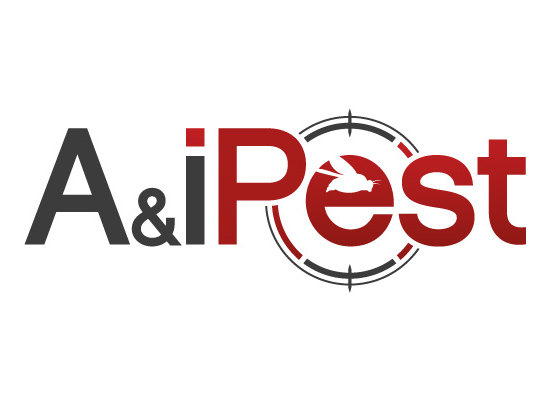Need a safe and effective pest control solution?
We use the latest and most effective solutions to resolve your pest problem. The pesticides that we use are safe for families, pets and are used as a last resort – not first. We would rather our visits were less frequent!
Click on a pest below for tips to reduce:
Over the past twenty years, changes to the industry have meant more targeted and friendly solutions rather than drowning your home with chemicals that omitted an offensive odour.
All our pesticides are approved by the APVMA (Australian Pesticides and Veterinary Authority) and applied as per the label instructions. We do not use no name or generic products.
We are licensed and insured for:
- Residential Pest Control
- Home
- Apartment or Units
- Townhouses
- Body Corporate and Strata
- Commercial Pest Control
- Restaurant
- Café
- Office
- Warehouse
- Factory
Our General Pest Treatments are for:
- Cockroaches
- Ants
- Spiders
- Birds
- Bees
- Wasps
- Fleas
- Rats
- Mice
- Silverfish
Which areas of the home are treated with a General Pest Treatment?
We listen to you about any potential problems and then assess the best treatment for your home.
Where possible we will treat:
- Roof Void (attic/ceiling space)
- Internal areas
- Sub floor (under the home-where possible)
- Weep holes
- Fence line
- Garage/car port
- External areas
Tips to reduce foraging pests:
Cockroaches
- De-clutter all shelves and keep all areas clean and tidy
- Seal all food in air-tight containers
- Make sure all grease and food scraps are cleaned daily
- Seal all gaps and cracks
- Fix leaking pipes
- Do not leave food out
- Clean bins and sink/s daily
- Remove all cardboard boxes
Rats/Mice
- Keep pantries, subfloors and roof voids clean and tidy
- Do not leave boxes or cardboard lying around
- Store all foods in air-tight containers
- De-clutter all storage areas and keep your lawn neat and tidy
- Wash bins out regularly
- Fix leaking pipes
Spiders
- Keep firewood and logs away from the home
- Clean up leaves and other organic debris from around the yard
- Trim back any trees and shrubs that contact the home
- Caulk or otherwise seal cracks and gaps in the home’s structure
- Reduce or eliminate piles of papers, boxes, bags and other clutter to reduce potential harborage areas
Flies
- Clean all sinks and drains with a toilet brush and wash out regularly
- Seal all foods in air-tight containers or cool rooms. Rotten food should be removed as soon as possible
- Clean around all skirting boards, pipes and production equipment, removing all gunky build-ups
- Wipe sinks down and keep them dry
- Empty and wash all bins regularly
- Do not leave buckets or cups of water out
- Wash out mops regularly and keep them dry
Ants
- Seal all food in air-tight containers
- Clean up crumbs from under kitchen appliances like the microwave, toaster
- Clean up all spillages
- Sealing all gaps and cracks
- Fixing leaking pipes
- Do not leave food out
- Clean out pet bowls after pet has eaten
- In the garden, ensure compost is enclosed and rubbish bins have tightly sealed lids
Fleas
Characteristics
Fleas are small, wingless insects ranging in size from 1-10 millimetres. You have more chance of finding them if you have a cat or a dog.
- A laterally compressed body
- Greatly enlarged hind legs allowing them to jump long distances
- Piercing sucking mouthparts
- Strong tarsal claws which enable them to grip their hosts
- Rear pointing hairs and bristles to allow for easy movement through the hosts hair or fur.
The following 3 steps are proven to give the best results
1. Pet treatment
Your animal needs to be treated before application. Consult with your Vet for best products. Ensure pets are treated with a suitable registered insecticide to avoid re-infestation of the treated premises.
2. Clean Premises
Inside: A thorough vacuuming or steam cleaning of all interior floor surfaces must take place before our treatment. All floor areas should be thoroughly and frequently washed and swept as part of ongoing hygiene. Other areas are floorboard cracks and wall floor joints.
Pick up all clothes etc from the floor and where practical hot wash them.
Vacuuming may collect eggs and other stages of the flea life cycle. However, larvae tend to hold onto the base of the carpet fibres.
You will need to vacuum areas where pet hair and lint accumulate, carpet edges, under furniture and in areas where the pet sleeps. Ensure that the vacuum bag is emptied outside into a garbage bin or bag less cleaners are emptied into a bag that is then sealed and disposed of outside and in the bin. Any pet bedding should be disposed of washed or dry cleaned.
Outdoors: the grass must be closely mowed to enable a thorough treatment. If possible dampen soil areas.
3. Insecticide application
We will treat internally with an Insect Growth regulator. If used alone on established pest populations it may take up to 3-4 weeks for fleas for populations to decline.


